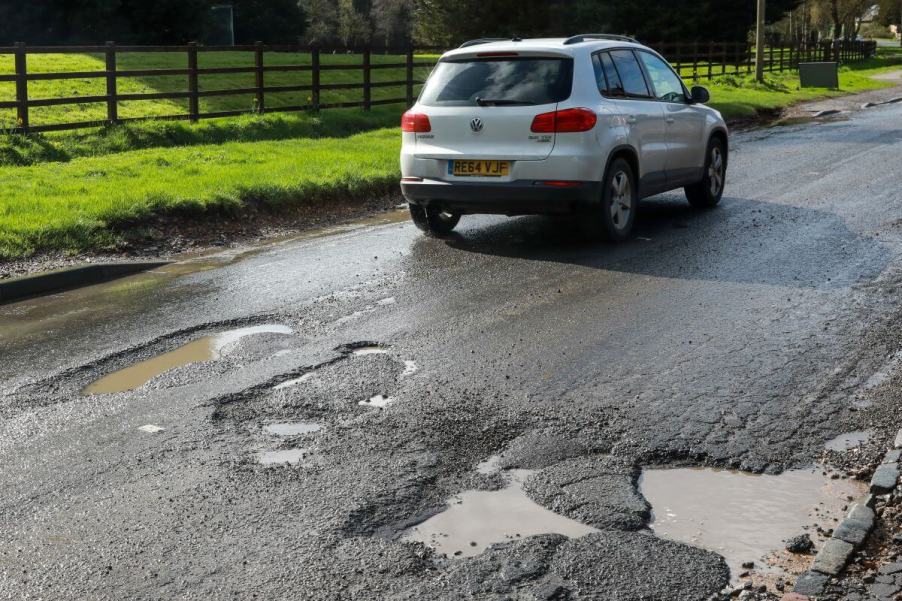
How Potholes Are Created and Damage Cars
Potholes are a common problem on roads and highways all around the world. These depressions in the road surface can range from small, barely noticeable divots to large, deep craters that can cause significant damage to vehicles. Understanding how potholes are created and the damage they can cause to cars is essential for drivers to be aware of to practice car safety and prevent accidents and costly repairs. Let’s explore the causes of potholes and how they can damage cars on the road.
What causes a pothole to form?
Potholes are an inevitable result of road use and natural environmental forces. According to RepairPal, the formation begins with erosion under the road surface, often due to water penetration. Water can seep beneath the pavement through cracks or gaps, causing the soil beneath to become saturated and less stable. As vehicles pass over the weakened area, the pavement begins to shift and crack, forming a pothole.
Another significant factor in the creation process is the freeze-thaw cycle, which is common in areas with colder climates. Water trapped within the pavement freezes and expands, causing the pavement to crack and weaken. As temperatures rise, the ice melts, and water seeps into the pavement. This cycle repeats, causing further damage to the pavement and resulting in the formation of potholes.
Extreme heat and heavy traffic can also contribute to pothole formation. High temperatures can cause the pavement to expand and contract, leading to cracking and weakening of the road surface. Heavy traffic can also cause significant wear and tear on the pavement, forming potholes over time.
Finally, poor road maintenance practices can exacerbate formation. Neglected roads with cracks and fissures are more susceptible to general wear and tear from heavy traffic, forming potholes. Regular road maintenance, including filling gaps and repairing potholes, can help prevent their formation and keep roads safe for drivers.
How potholes can damage your car

Potholes can cause significant damage to vehicles, including tire damage, wheel damage, suspension and steering damage, exhaust damage, undercarriage damage, and body damage. When a tire hits a pothole, it can cause it to puncture or create a bubble, leading to a blowout. The solution to tire wear is often to replace the tire, depending on the severity of the damage.
When a wheel hits a pothole, it can cause the wheel to bend or crack, leading to balance problems or even a flat tire. In some cases, the wheel may need to be replaced entirely. Suspension and steering damage can also occur, leading to alignment, steering, and overall handling issues. The solution to suspension and steering damage is typically to replace the damaged components or realign the vehicle.
Potholes can also cause exhaust system damage, such as a damaged muffler or catalytic converter. This damage can cause issues with emissions and overall vehicle performance. Undercarriage damage can occur when a vehicle hits a pothole, damaging the undercarriage components or the vehicle frame. The solution to undercarriage damage is often replacing damaged parts or reinforcing the vehicle frame.
Michigan has the highest number of potholes
Despite potholes being a widespread concern in many areas, Michigan holds the title for the state with the highest average number. According to News10, with a search index of 44, it’s clear that the Great Lakes state’s harsh winters take a toll on its roads. The combination of freezing temperatures and heavy traffic can cause even the best-maintained roads to develop potholes quickly. While many cities and states work diligently to fill potholes and repair roads, the sheer volume of damage can be overwhelming. Michigan serves as a reminder of the importance of regular road maintenance and the impact weather conditions can have on our infrastructure.



